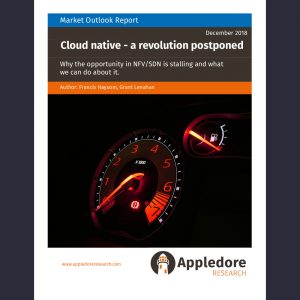FREE
The report explores the importance of intent in the transformation and automation of CSP networks. This report follows on from our OSS Sea Change Report
What is intent
Well-structured intent is fundamental to simplifying automation, making its implementation easier, and reducing the future maintenance burden. “Intent” means that we define what the customer wants or needs – improving the likelihood of satisfaction. In addition, intent can define operator’s internal business objectives – for example “at the lowest cost that meets the customer’s need” – improving business performance.
Despite its importance, intent is often a little-understood buzzword.
Technically, intent means defining a service or function “declaratively” rather than “imperatively”. A simpler way to view intent is “define the desired outcome, rather than how to achieve it”. An example is “define the capacity or latency required” rather than “define various image sizes or containerized apps to deploy”. Essentially, you define the SLA, not how to achieve it. This implies that the orchestration logic has the ability to find and implement a solution to the “SLA”.
The truth is, that we use intent today poorly. Appledore believe it is more productive to think about “well structured’ vs “poorly structured” or “good vs bad” intent. Good intent defines a functional objective and therefore allows for a high degree of solution flexibility, delivers loose coupling and minimizes ongoing maintenance. Bad intent, on the other hand, tightly-couples services to a specific implementation, or a set of possible implementations – limiting flexibility and requiring constant maintenance and re-integrations down in the bits and bytes. This ruins automation and leads to high cost and complexity.
Contents
EXECUTIVE SUMMARY
INTRODUCTION AND OVERVIEW
WHAT’S AT STAKE?
INTENT LANDSCAPE
WHAT HAPPENS TODAY: BAD INTENT
WHAT DOES GOOD INTENT LOOK LIKE IN TELCO OPERATIONS?
NETWORK AUTOMATION SOFTWARE VENDOR POSITIONS
SUMMARY AND REQUIREMENTS FOR SUCCESS
BIBLIOGRAPHY / FURTHER READING
ABOUT THE AUTHORS





